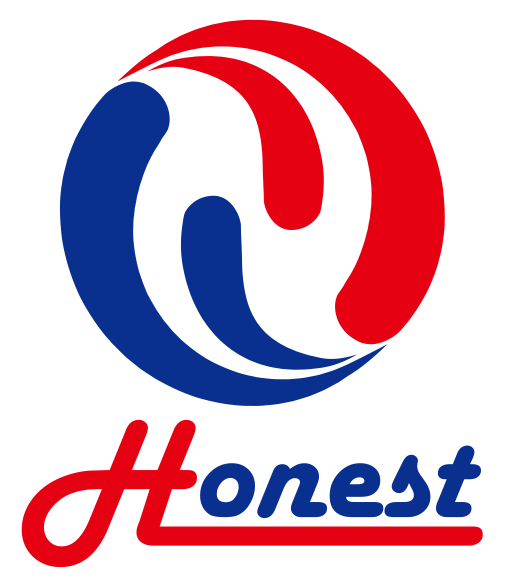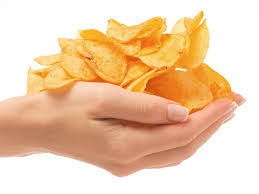Manufacture processor of frozen French fried potatoes
Excerpt from “Grading Manual for Frozen French Fried Potatoes”, United States Department of Agriculture
Each processor of frozen French fried potatoes has own particular methods of manufacture. However, there are a number of things common to all processors. The following outline describes the principal steps in manufacture. These steps may vary with different manufacturers. The principles given here are basic.
Washing
If potatoes are in condition suitable for processing they are washed and may be run through hot water to remove some of the dirt and to loosen the peel. The potatoes may then be sized prior to peeling. Some plants flume the potatoes from place of storage to the peelers thus accomplishing the preliminary potato washing in this manner.
Peeling
After washing off excessive dirt the potatoes are dropped into peeling machines. These may be steam, lye, abrasive or roller type peelers. The steam and lye peelers give a quick cook which loosens the skin or peel but does not penetrate deeply into the potatoes. The peelings are then removed by passing the potatoes through rubber rollers and water sprays. In abrasive, roller type peelers the skin or peel is removed without the addition of heat.
Trimming
The potatoes after leaving the peeling machines are trimmed on wide moving belts. In the better plants these belts are arranged in sections so that each potato is picked up by an operator, examined for defects, trimmed if necessary, and tossed over a barrier onto another section of the belt. This procedure is much more satisfactory than trying to stir the potatoes on a single belt because many potatoes may miss any examination at all on the single belt. At this time the potatoes may also be sorted for size; the larger ones going to institutional lines; the smaller ones into the retail and by-product lines.
In some plants electric eye sorters are installed after the slicing operation to eliminate blemished units, thus cutting down on the amount of hand sorting and trimming of the whole potatoes.
Slicing
After the potatoes are trimmed and sorted to size they go to the slicing machines. These potato slicers usually consist of two set of knives either rotary or fixed. One set of knives slices the potato to the desired thickness. The potato slices are then passed through another set of knives, which cut the slices to strips if desired. The size of the strips depends on the wishes of the management. It may vary from one quarter by one quarter inch to one half by one half inch in cross-section. The usual size for retail sales is 3/8 by 3/8 inch. Poor slicing may be caused by small or irregular-shaped potatoes, by poor machinery, or good machinery not properly used or adjusted. The knives may be straight or corrugated.
Sizing
In the process of cutting potatoes into strips, there is always a certain amount of slivers and otherwise irregular shaped pieces. A certain number of these more or less irregular shaped pieces are expected in this product and are allowed for in the tolerances contained in the grade standards. It is usually necessary, however, to pass the cut potatoes over some type of shaker screen to remove a portion of the small pieces and slivers. The amount of chip material removed depends to some extent on the wishes of the purchaser. Processors do not like to remove any more than they have to because of the loss in yield.
By-Products
The excessive loss of potato material because of the peeling, trimming and screening operations causes processors to consider by-products to utilize this material. Often this material is wasted; however, a large number of products, such as patties, puffs, shreds, diced, and mashed have been developed to utilize this material. Dehydrated flakes is also an important use. Where satisfactory use is made of screenings and sound throw-outs, there is less tendency to keep this material in the frozen French fry pack.
Desugaring
Sugar in excessive amounts or irregular quantities of sugar between units may cause French fried potatoes to have dark or irregular color, poor texture and/or unpleasant taste. Proper harvesting, good storage and conditioning after storage help in the control of the sugars. However, conditioning and storing potatoes is an expensive process and is avoided whenever possible. Reasonably satisfactory methods of rapid equalization of sugar content have been developed. The methods used vary between manufacturers. However, the basic principle is to run the sliced potatoes through a water bath leaching out apportion of the surface sugar and then replacing the sugar to the desired level by blanching in a sugar solution (partially cooking the product) so that upon frying the color between units will be uniform. This method, based on a patented process, evens the surface sugar content between units. The sugar content of the whole slice is not greatly affected.
Blanching
The sliced potatoes are usually run through a hot water blanch which partially cooks the product. This may or may not be a part of a desugaring process referred to previously. Blanching can provide more uniform color after frying, inactivate enzymes, and form a layer of gelatinized starch that limits oil absorption and improves fry texture (Refs. 65-66). Blanching also removes reducing sugars and asparagine from the potato surface, decreasing acrylamide in fries
After blanching the product may pass beneath heating units, under forced draft, which tends to remove most of the excessive moisture before entering the fryer.
Frying
Frying of the potatoes is usually a continuous process. The potatoes enter the hot oil on or under a draper-chain type belt traveling a certain distance and being removed, or by an undulating type belt moving the potatoes in and out of the oil; the oil flow carrying the potatoes along from one end of the fryer to the other. Some manufacturers use a double fry. That is, after the first fry, approximately 350 to 370 degrees Fahrenheit, the potatoes fall onto another belt and enters another fryer at about the same temperature. There are several reasons for this; the principle one being that there is more even coloring because of the stirring of the potatoes as they fall from one belt to another.
Fat Or Oil
The term “fat” refers to a product that is plastic at room temperature such as lard or the usual vegetable shortenings. Oils are liquid at ordinary temperatures. The terms are here used to mean the same thing. Any animal or vegetable fat or oil which does not impart an unpleasant flavor to the French fries is suitable for the purpose. Different processors use different oils. However peanut oil, cotton-seed oil, or mixtures of vegetable oils including some amount of soybean oil are also used. Lard, which is hog fat imparts a flavor to the French fries that is particularly desirable to some people. Soybean oil in large amounts may impart a flavor that is usually disliked. Hydrogenated lard is tasteless.
One of the biggest difficulties in proper frying is to maintain the fat or oil in good condition.
Fats and oils deteriorate rapidly with the addition of water under high temperature, also when in contact with bronze or brass fittings. When the frying oil deteriorates it darkens in color, develops unpleasant odors which are imparted to the product. Dark bits of burnt carbon may be deposited on the French fries giving them an unpleasant appearance. Quality control people often use the amount of free fatty acid present in the oil as an indication of degree of deterioration. A range in the area of 0.4 to 1.0 percent is regarded as normal.
Potatoes lose up to 30 to 40% of their weight, principally water during frying. Water is removed from the oil by a partial vacuum created by the upward draft in the hood and attaching stack covering the frying vat. Condensation from the hood is carried away by troughs along the edge of the hood. The tendency to deteriorate may be checked by eliminating bronze or brass fitting, adjusting size of fryer to volume of potatoes, using oil that will stand the highest temperature in the system, and by adding new oil from time to time.
In the better processing methods the amount of oil used is very small and is usually heated by super-heated steam in a heat exchanger rather than by direct flame. This keeps the oil in all parts of the system well below the scorching point. Usually the oil is filtered continually to remove charred materials and is thus kept clean.
Time And Temperature
There are many variants to be considered in determining the time and temperature of the fry. Potatoes of high specific gravity require less time to lose their excess moisture than those of low specific gravity. Different varieties of potatoes and potatoes in different conditions with respect to reducing sugars may require different cooks to attain a uniform degree of color. Certain markets seem to want potatoes fried much lighter in color than do other markets. French fries packed for institutional use, where an additional fry is to be given by the users, are usually fried to a much lighter color than are retail packs where the cooking is usually completed by the oven method. These light coloured fries are usually designated as “oil-blanched” or “par-fried”.
Probably the most satisfactory means of arriving at the correct time and temperature for frying is to actually fry representative sample batches of each new load. If samples come out too dark either the time or the temperature, or both, of the cook may be reduced; if too light they may be increased. In most plants quality control people watch the color of the fries as they leave the fryer, both for overall color and for uniformity of color and recommend suitable adjustments of the process. These recommendations may be based on experience or on actual color plates or models which are provided as guides for the operators. The USDA color standards may be used for this purpose.
Immediately after coming from the fryer heat maybe applied to drive off excess surface oil. In many plants the potatoes are cooled quickly after the fry by a blast of air. This air blast may be designed to blow off the outer oil which clings to the hot potatoes.
Packaging
Packaging is usually accomplished by automatic packaging machinery which places the proper amount of the French fries into each package. The packages are usually weighed individually and adjusted for exact weight. This packaging operation may take place before freezing or, if belt freezing is used, after the potatoes emerge from the freezer. The resulting end product of the belt freezing method is easier to handle because the units separate easily whereas the plate frozen product may emerge as one solid unit. Broken units are more common when the product is belt frozen.
Ref to: Frozen French Fries Machine


